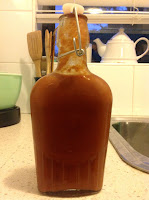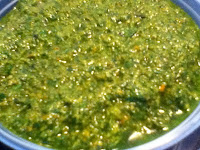I had some bacon and eggs in the fridge, but felt like doing something other than frying, and the result was very pleasing and provided a lovely bachelor meal and tasty work lunches to boot. I can hardly wait to run it by the boys!
I’m new to the pie game, but I’m getting better at it. And so far - the boy test has been ok.
Generally you use a short crust pastry for the bottom and puff for the top, but this time I used puff all around, and really enjoyed the result.
Recipe - Bacon and egg pie
Ingredients
- 2 sheets puff pastry
- 4 rashers bacon, rind removed
- 5 eggs
- 1 onion
- 1 red capsicum
- .5 cup grated mild cheese
- .25 cup crumbled stilton (or other blue or bighty cheese)
- 1 handful green beans
- 2 tablespoons chopped shallots
- 2 birds eye chilies, chopped
- ground pepper and cumin to taste
- Butter for greasing the pie tray
Method
Preheat oven to 180º. Grease a 25cm (or there abouts) pie dish with butter.
Take 2 sheets of puff pastry and allow to thaw (no, I’m not quite up to making my own pastry yet)
Chop bacon, onion, capsicum and beans. Place in a cold frying pan on medium to low heat on the cooktop. This allows the bacon fat to render out and the flavour to distribute nicely. Sauté for 10 minutes. (If you’re feeling lazy, you can just pile everything into the pie and cook, but the result isn’t as good)
Place a sheet of pastry into the pie tray and trim the edges with a sharp knife. Stretch the pastry out a little so that there is some extra over the sides (the puff pastry will shrink a little in the oven).
Place the pie tray and pastry base in the oven for 10 minutes. By this time, the pastry will have ballooned up, but that’s ok. Poke of few holes in and pat it back down flat, then add mixture from frying pan.
Sprinkle cheeses over the top.
Take one egg and whisk in a small bowl.
Crack the other 4 eggs over the top of the pie mixture. Sprinkle chilies and shallots. Season with pepper and cumin.
Top with the second sheet of puff pastry.
Trim with a sharp knife and brush the pastry with the egg mixture to that it glistens. This will help the pastry go golden and crispy. With a fork, poke holes in the pie lid to allow steam to come out.
Return to the pie to the oven and cook for 40 minutes.
Remove when golden!


































